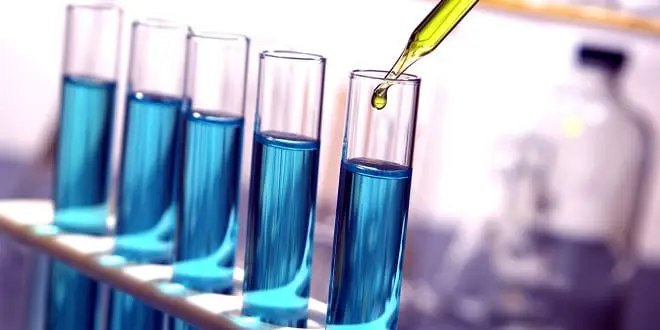Downstream Processing
DOWNSTREAM PROCESSING
Bioseparation and Downstream processing cost:
(1) 50% (drug, protein, biological product)
(2) 80% (recombinant protein)
Ratio of recovery to fermentation cost
(1) 2.0 (enzyme)
(2) 1.0 penicillin
(3) 0.16 (ethanol)
HOW TO MINIMIZE DOWNSTREAM PROCESSING?
Parameters to consider in selecting downstream processes
PRECIPITATION
Plate and filter press
most suitable for fermentation broths with a low solids content and low resistance to filtration.
used as a ‘polishing‘ device in breweries to filter out residual yeast cells following initial clarification by centrifugation or rotary vacuum filtration.
It may also be used for collecting high value solids.
Because of high labour costs and the time involved in dismantling, cleaning and reassembly, not be used when removing large quantities of worthless solids from a broth.
increased temperature would lower media density but is of little practical use with fermentation broths), the diameter of the cells (could be increased by coagulation/flocculation) and the viscosity of the liquid.
In practice, the cells are usually very small, of low density and are often suspended in viscous media.
Liquid shear
Liquid shear is widely used in large scale enzyme purification
Dures. High-pressure homogenizers used in the processing of milk and other products the food industry have proved to be very effective microbial cell disruption
Solid shear
Pressure extrusion of frozen micro-organisms at around – 25 C through a small orifice.
Disruption is due to a combination of liquid shear through a narrow orifice and the presence of ice crystals.
It was possible to obtain 90% disruption (single passage of S. Cerevisiae, 10 kg yeast cell paste h -1.
This technique might be ideal for microbial products which are very temperature labile.
Agitation with abrasives
Mechanical cell disruption can also be achieved in a disintegrator containing a series of rotating discs and a charge of small beads.
The beads are made of glass, alumina ceramics and some titanium compounds
Dissipation of heat generated in the mill is one of the major problems in scale up ( use a cooling jacket.)
Freezing and thawing
Freezing and thawing of a microbial cell paste will inevitably cause ice crystals to form and their expansion followed by thawing will lead to some subsequent disruption of cells.
It is slow and has not often been used as a technique on its own( used in combination with other techniques. ) ( ie α-Glucosidase from S. Cerevisiae)
Ultrasonication
High frequency vibration (- 20 kHz) at the tip of an ultrasonication probe leads to cavitation, and shock waves thus produced cause cell disruption. very effective on a small scale, unsuitable for large-scale operations.
Power requirements are high, there is a large heating effect so cooling is needed, the probes have a short working life and are only effective over a short range.
Osmotic shock
Osmotic shock caused by a sudden change in salt concentration will cause disruption of a number of cell types.
the effect on microbial cells is normally minimal.
a successful technique for the extraction of luciferase from Photobacterium fischeri
(provided that the desired enzyme will tolerate a pH of 11.5 to 12.5 for 20 to 30 minutes.)
Used to extract L-asparaginase
Enzyme treatment
There are a number of enzymes which hydrolyse specific bonds in cell walls of a limited number of micro-organisms.
Enzymes shown to have this activity include lysozyme (from hen egg white, commercially available)and enzyme extracts from leucocytes,
one of the most gentle methods available,
unfortunately it is relatively expensive and the presence of the enzyme(s) may complicate futher downstream purification processes.
Enzymes may also be used as a pretreatment to partially hydrolyse cell walls prior to cell disruption by mechanical methods.
CHROMATOGRAPHY
chromatographic techniques are used to isolate and purify relatively low concentrations of metabolic products.
Depending on the mechanism by which the solutes may be differentially held in a column, the techniques can be grouped as follows:
(a) Adsorption chromatography.
(b) Ion-exchange chromatography.
(c) Gel permeation chromatography.
(d) Affinity chromatography.
(e) Reverse phase chromatography.
(f) High performance liquid chromatography.
Ultrafiltration, solutes of high molecular weight are retained when the solvent and low molecular weight solutes are forced under hydraulic pressure (around 7 atmospheres)through a membrane of a very fine pore size.
examples: for the recovery of bio-molecules: viruses, enzymes,Antibiotics.
Reverse osmosis, the solvent molecules are forced by an applied pressure to flow through a semi-permeable membrane in the opposite direction to that dictated by osmotic forces, and hence is termed reverse osmosis.
It is used for the concentration of smaller molecules than is possible by ultrafiltration.
Concentration polarization is again a problem and must be controlled by increased turbulence at the membrane surface.
Liquid membranes
Liquid membranes are insoluble liquids (e.g. an organic solvent) which are selective for a given solute and separate two other liquid phases.
Extraction takes place by the transport of solute from one liquid to the other.
Advantages:
(a) Large area for extraction.
(b) Separation and concentration are achieved in one step.
(c) Scale-up is relatively easy.
Used in lactic and citric acid extractions
Drying
The drying of any product (including biological products) is often the last stage of a manufacturing process
-spray dryer( commonly used , economic)
-drum dryer-
-fluidized bed dryer ( common in pharmaceutical ind)
-freeze dryer( suitable for heat sensitive materials)
Cryrstallization
…



